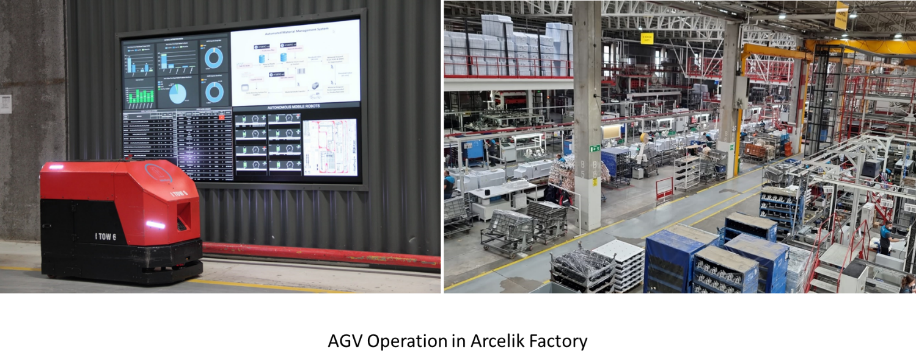Pilots
Use cases
The FORTIS project will include three main pilots in the sectors of construction, infrastructure services, and manufacturing. These pilots will provide 5 use cases where the Human-Robot Interaction will be demonstrated.
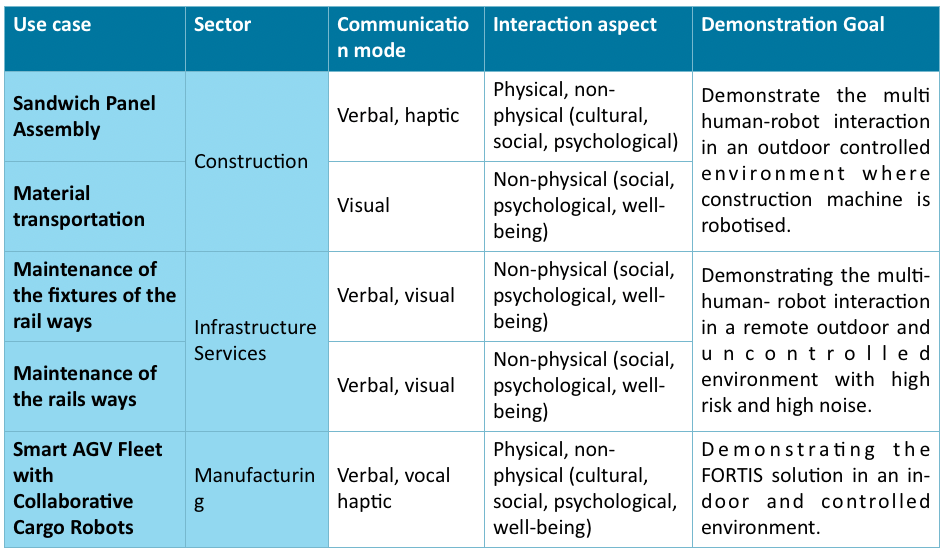
Construction
Construction is a sector which has shown difficulties in improving industrialization techniques due to low integration of technology. GARCIA targets the construction of industrial, commercial, and residential buildings using on-site and off-site methods, employing about 250 and 1000 employees, directly and indirectly, respectively. GARCIA identified two main challenges that might be improved using HRI.
This task may require the correction of verticality by using a wood beam and a hammer. After that, the panel is fixed to the secondary structure, which consists of cold-formed metal purlins, using self-drilling screws. Both the ground worker and the elevated worker perform this task manually.
In order to solve the problem, a telehandler will be equipped with the FORTIS solution. However, during the transportation of the panel, the telehandler robot will perform the elevation while a ground worker corrects the panel orientation to avoid scratching the bottom sandwich panel. In this operation, the worker will interact with the robot both verbally and physically. Verbally, the worker will communicate the necessary movements to the robot. The robot will be able to recognize the worker’s commands and make fine adjustments to the panel before fixing it. Physically, the worker will guide the telehandler by pulling the panels, and the robot will adjust its motion based on the force applied by the worker and the tone of their voice.
Materials are transported in pallets using a forklift or a crane which are operated by humans. Unfortunately, On-Site transport-related accidents can lead to material damage, worker impact, limb crushing and machine rollover.
A hybrid collaborative fleet of robots will be used for internal material transportation on-site, to reduce accidents, material waste, and environmental impact. The robots will interact with humans in a non-physical way, acting independently to locate and move materials while avoiding accidents with humans. The robots will also adapt their motion, including acceleration, speed, and position, to ensure the safety of human workers around them.
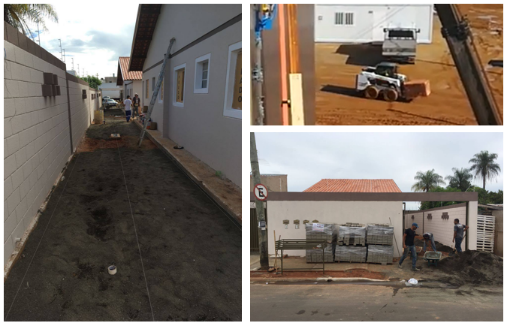
Infrastructure services
The railway track is fixed to crossties using a set of small elements such as rail clips, guid plates, rail pads, dowels, and screws. Maintaining railway tracks can be a laborious, complex, and expensive task. However, it is crucial to ensure the safety and sustainability of railway networks worldwide. As the world’s population grows, demand for an efficient transport infrastructure becomes more important. VIAS is responsible for maintaining both the fixtures and the railways themselves. VIAS is looking for a solution that uses HRI technologies:
Railway fixture set maintenance is laborious and slow work, where workers perform the work manually. VIAS keeps monitoring these fixtures and using timely-based measure to start the maintenance tasks. A leading worker starts by unscrewing the fastening, followed by workers who manipulate by hand the clip or the pads, evaluating and fixing or replacing them, and finally another worker with power spanners comes screwing again.

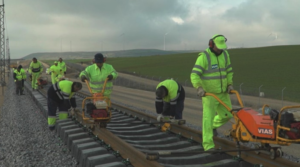
FORTIS is expected to improve the performance, quality and safety of the outcome for these complex tasks by implementing fluid and coordinated movements and operations between an autonomous movable unit that could autonomously perform some of the tasks partially, turning the clip and/or screwing the bolt, in continuous communication with the workers that would do the rest of the main tasks, in a complementary way.
The railway system is exposed to heavy and recurring loads that can lead to fatigue in the material. This fatigue issue requires regular maintenance, which involves manual labor and requires the expertise of highly specialized personnel who possess valid permits to carry out various operations. VIAS is searching for a solution that can reduce the number of workers required for this task.
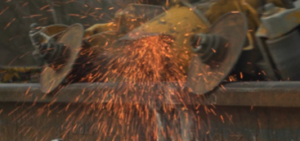
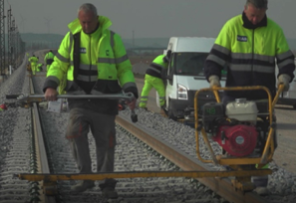
FORTIS enables direct interaction between humans and machines, leading to an improvement in work quality and worker safety. The system achieves this by fostering collaborative, cooperative, and complementary work between the autonomous grinding head, humans, and the environment. This is facilitated by continuous communication between them through a human-machine interface that relies on autonomous and continuous measurements for geometrical characterization.
Manufacturing
Arcelik group is a company of Koç Holding, Turkey’s largest holding. Arcelik’s main field of activity is the production of household appliances. Arcelik is a leading household appliance (Built-in & Freestanding Major Appliances, Small Household Appliances, Consumer Electronics, Heating Ventilation- AC, Hermetic Compressors, Electric Motors) producer of Europe.
When multiple Automated Guided Vehicles (AGVs) are deployed in close proximity to one another, various issues such as communication problems, obstacles on the path, and map updating can arise and cause disruptions in task execution. These factors limit the use of AGVs alongside human workers, in situations where long-term interaction is required. As a result, the efficiency of using such robots can be reduced, as they may be interrupted by human workers instead of working together smoothly.
In order to enable robots to work alongside humans and physically interact with them, FORTIS will install additional sensors and a collaborative robot on the Automated Guided Vehicle (AGV). These collaborative robots will assist in handling materials and will interact with humans in a way that is similar to human-to-human interaction. This mobile robot will be used as a component distributing robot. As every operator has different physical features such as height, body size, dominant arm, and fatigue level, the cobot on the AGV will adapt its motions and location to properly service each individual human operator.
